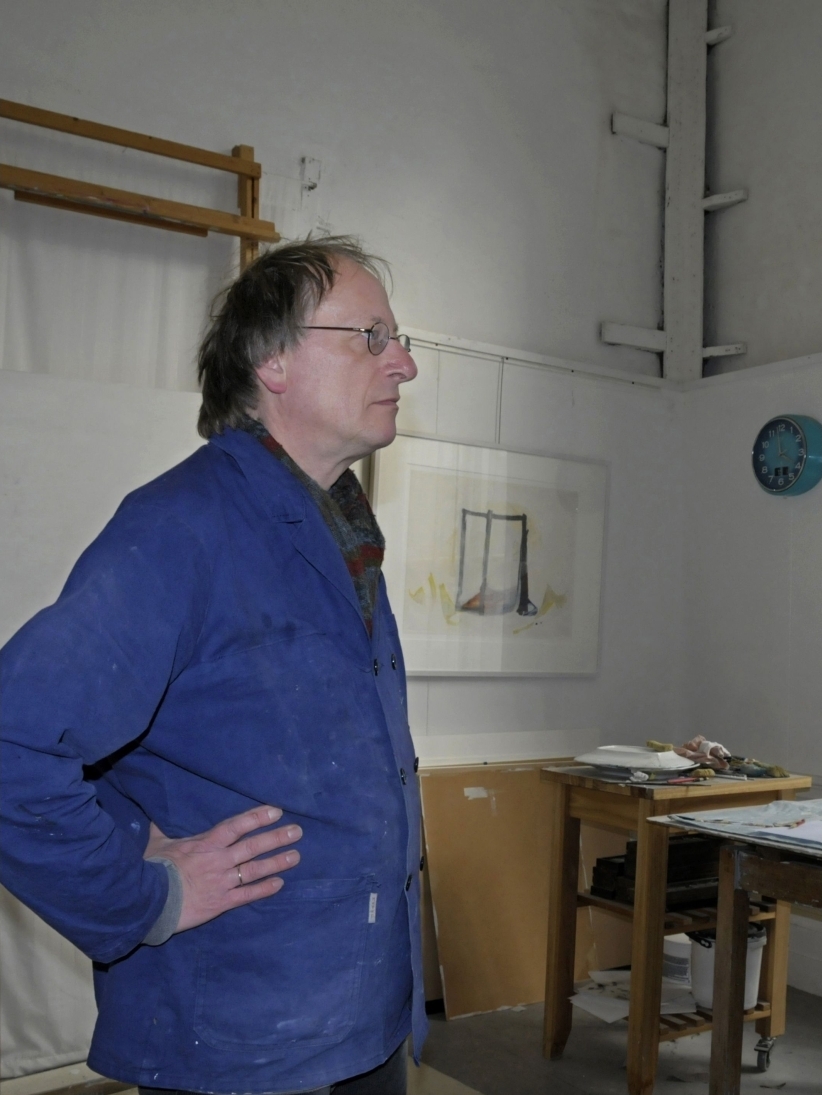
Ron Gennisse in his studio in Dordrecht,
(fotografie Fred van Rijen)
The art of lithography
| Invented in 1798, the process of lithography employs drawing with a greasy substance on a prepared ground, which is usually a limestone slab (hence: litho=stone, graph=writing). Through treating the stone with chemical solutions, the ground holds water, repelling the paint and printing white; while the greasy drawing attracts the paint and prints whatever paint is rolled over the image. To make a lithograph, the artist paints directly on the stone so the finished print exactly records his particular gesture and style of drawing. As a process, lithography is probably the most unrestricted, allowing a wide range of tones and effects. Several hundred fine prints can be taken from a stone. The medium was employed by many 19th-cent. artists, including GOYA, DELACROIX, DAUMIER and DEGAS, |
|